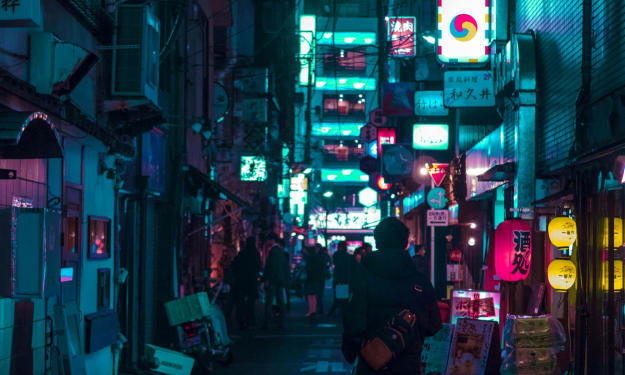Giżycko in the Heart of the Great Mazurian Lakes
A lovely town in Poland

Gizycko is the largest town on what is known as the trail of the Great Mazurian Lakes. The town lies on a narrow pass between Lake Niegocin and Lake Kitano. This is one of the most attractive regions of Poland and great for tourists looking to visit places away from overcrowded cities. As much as European cities sometimes provide a lot of excitement, it’s great to get away from the crowds and discover lovely places you might have overlooked.

The town of Gizycko, as part of “the land of a thousand lakes,” offers everyone a chance to return to nature. You’ll soon discover more than 100 lakes around this town. This is a great place for water tourism and iceboating, and the lakes offer great sailing. In the summertime, you can see people on the lakes sailing, kayaking, water cycling, and even windsurfing. This is why Gizycko has become one of Poland’s largest holiday and tourist resorts and is referred to as “the summer capital of Poland.”

While visiting Gizycko, take the time to see the Boyen Fortress, a most interesting monument. It’s a unique example of a 19th-century Prussian school fortification and counts among the best-preserved monuments of the defensive architecture of 19th-century Poland. Its foundation stone was laid on September 4, 1844, to honor the services of the contemporary Prussian Minister of War, General Hermana von Boyen. The monument is shaped like an irregular hexagram with a courtyard in the center. Its shape is determined by a 5 m 3.3 km long brick and stone wall – Carnot’s Wall, a dry moat, and inner and outer barriers.

At each of the six corners of the star is a bastion. Three of these are named after the given names of General Boyen – Leopold, Ludwig, and Herman. The others have the features of his coat of arms – Schwert or Sword, Recht or Law, and Licht or Light. At the entrance to the monument are two-element gates that have neo-Gothic details. There is much to see and admire on the 100-hectare estate. Among the interesting things to see is a carrier pigeon station that can hold up to 700 pigeons. This has become a summer entertainment place where you can hear concerts in the amphitheater, and a lot of festivals are held here. You’ll also find a youth hostel, a museum, a vintage motorcycle club, a diving club, and a radio station.

Explore the Teutonic Castle erected in the first half of the 14th century. It is found by the canal that divides the town in two. At one time the castle was formed a defensive complex with the fortress. After WWII it became a hotel. Today you can see the castle as a four-story rectangular building.

The most unique structure built in 1860 is the turning bridge which is the only one of its kind in Poland. This structure and one other in Europe are the only two of their kind. The turning bridge is located on the Luczanski Canal, and it was designed so that there would be communication between Boyen Fortress and the town. The bridge’s movable span is 20 m long and 8 m wide, and it weighs more than 100 tons. It turns sideways and has always been operated by one person manually.

A church worth seeing for its Mazurian architecture is the neo-Classical Evangelical Church. It was designed by Berlin architect Karol Frederic Schinkel. International organ concerts are held in the church every Sunday during the summer.

St. Bruno’s Church at Pionierska Street is the oldest Catholic Church. It sits on a small elevation that is reinforced by an erratic boulder wall. This church was designed by Martin Weber for the military. There are some military elements inside the church and on the tower clock, the time hands are made with bayonets. The peak of the frontage is decorated with a mosaic that features St. Bruno surrounded by Prussian troops.

The Diakonis “Bethanien” Mazurian House located on Warszawska Street is now a hospital. It is interesting to take a look at the hospital chapel. At one time it was kept by evangelical nuns and could be used by patients. What is left of the original interior is the pulpit, the decorative floor, the choir stalls, the remains of stained glass windows, and the roof bonding. The interior is still decorated with moldings and sculpted wooden panels. The stained glass windows show the date 1910 and the name of the author.

Take a walk around town, and you can enjoy the traditional 19th- century municipal tenement houses along Pionierska and Dabrowskiego Streets. These are a row of red-brick terraced houses with neo-gothic decorations.

To get an incredibly fantastic view of Gizycko head for the Water Tower built in 1900 with red unplastered bricks. It was built in the neo-Gothic style and has fascinating external vaulting around its crown and two coats of arms over the entrance – one Mazurian and one municipal to show that it was part of the region. At one time this tower provided water to dwellings for 97 years. It was reconstructed, and a dome and three floors were added, and the viewing platforms were extended with telescopes. It has become one of this town’s most unique tourist attractions. To get to the top you have to climb 129 steps or take the elevator. The highest floor of the tower is 162 m above sea level from which stretches an amazing panorama of Gizycko and the surrounding area of forests and lakes. Inside the tower is a museum exhibiting the history of the local people and a café.
About the Creator
Rasma Raisters
My passions are writing and creating poetry. I write for several sites online and have four themed blogs on Wordpress. Please follow me on Twitter.






Comments
There are no comments for this story
Be the first to respond and start the conversation.